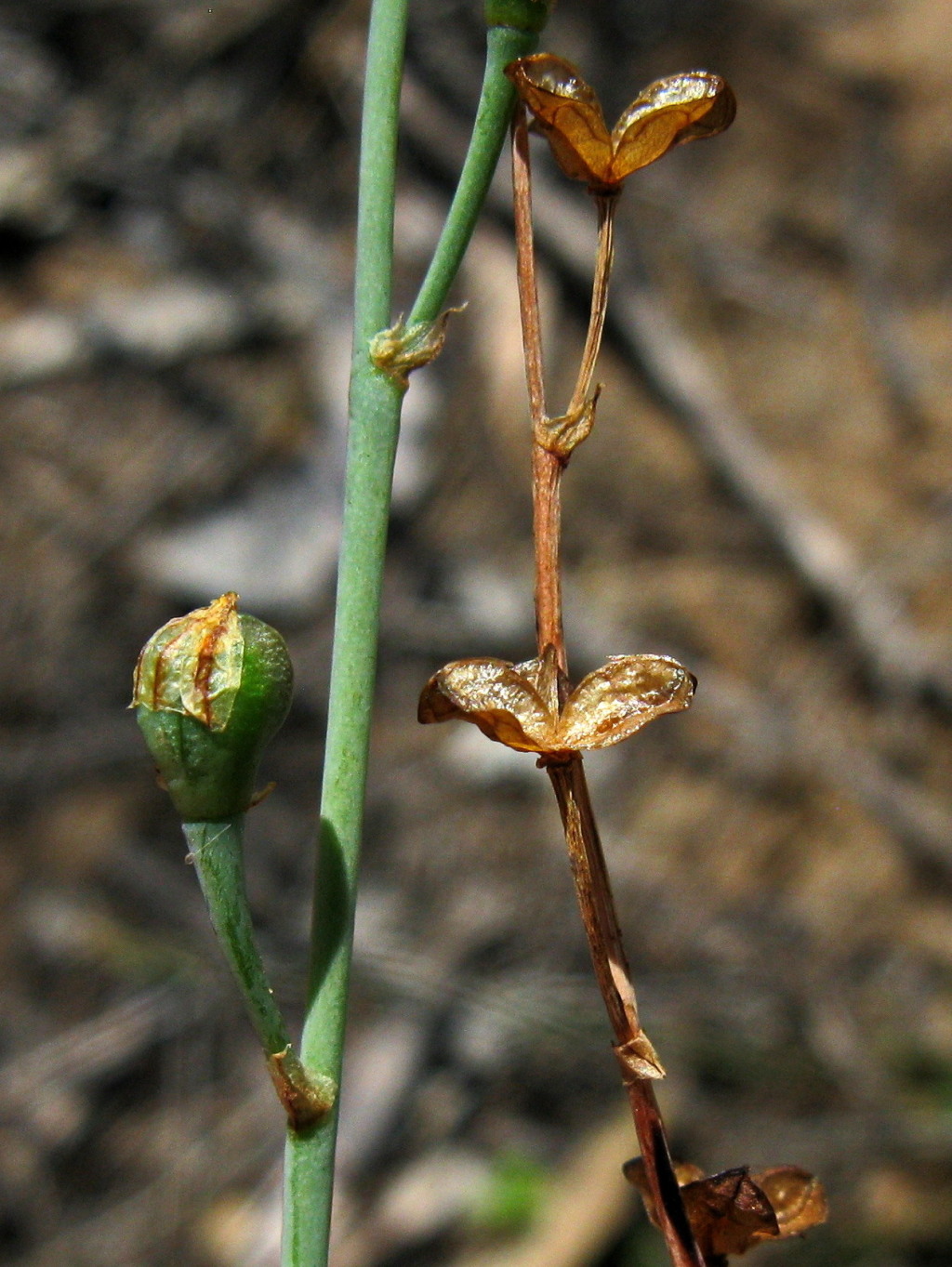Asphodelaceae
Perennial herbs, shrubs or trees, sometimes succulent; rhizome often present. Stems fibrous or woody, subterranean to tall. Roots fibrous or thickened and tuberous. Leaves alternate, spiral or distichous, often forming a rosette, often sheathing at base, linear, subulate or ovate-lanceolate, flat, compressed, terete or wedge-shaped, sometimes thick-leathery or succulent. Inflorescence terminal or axillary, 1–many-flowered and variously arranged in a panicle, raceme or spike. Flowers bisexual, actinomorphic or rarely slightly zygomorphic, often subtended by bracts; tepals free or fused, fleshy to dry and papery, in 2 whorls of 3; stamens 6, in 2 whorls of 3, mostly hypogynous, free or slightly connate at base, sometimes with 3 stamens joined to the base of tepals, anthers sometimes ornamented; carpels 3, fused, ovary superior, 1- or 3-locular, ovules 1–many per locule; style simple with a capitate or 3-lobed stigma, stigma sometimes with a tuft of hair. Fruit a capsule or berry, often subtended by persistent perianth; seeds usually flattened or angular, testa black (with phytomelan), often winged or ornamented, with or without copious endosperm.
About 40 genera with c. 880 species world-wide (except North America); 25 genera and c. 146 (15 naturalised) in Australia, 16 genera and c. 52 species in Victoria.
A somewhat unintuitive family with few clear distinguishing morphological features. It includes genera previously placed in Hemerocallidaceae and Xanthorrhoeaceae, which are now treated as subfamilies (Chase et al. 2009). The family circumscription has been controversial, and some authors still prefer a three-family concept (i.e. Asphodelaceae, Hemerocallidaceae and Xanthorrhoeaceae). The monophyly of Asphodelaceae is supported by molecular data (e.g. Manning et al. 2014). Previously, the name Xanthorrhoeaceae had nomenclatural priority as used in APG III, but the name Asphodelaceae has now been conserved (Wilson 2016), and is now the name to be applied to this family.
Conn, B.J. (1994). Xanthorrhoeaceae. In: Walsh, N.G.; Entwisle, T.J., Flora of Victoria Vol. 2, Ferns and Allied Plants, Conifers and Monocotyledons, pp. 720–734. Inkata Press, Melbourne.
 Spinning
SpinningSynonyms
Angiosperm Phylogeny Group (2009). An update of the Angiosperm Phylogeny Group classification for the orders and families of flowering plants: APG III. Botanical Journal of the Linnean Society 161(2): 105–121.
Chase, M.W.; Reveal, J.L.; Fay, M.F. (2009). A subfamilial classification for the expanded asparagalean families Amaryllidaceae, Asparagaceae and Xanthorrhoeaceae. Botanical Journal of the Linnean Society 161: 132–136.
Klopper, R.R.; Smith, G.F.; van Wyk, A.E. (2013). (2129) Proposal to conserve the family name Asphodelaceae (Spermatophyta: Magnoliidae: Asparagales). Taxon 62: 402–403.
Manning, J.C.; Boatwright, J.S.; Daru, B.H.; Maurin, O.; van der Bank, M. (2014). A molecular phylogeny and generic classification of Asphodelaceae subfamily Alooideae: A final resolution of the prickly issue of polyphyly in the alooids?. Systematic Botany 39: 55–74.
Wilson, K.L. (2016). Report of the General Committee. Taxon 65(5): 1150.


